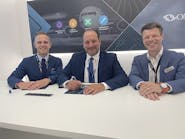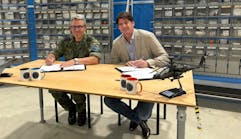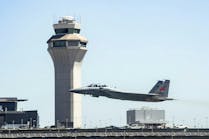RUAG Australia’s Wingfield Surface Finishing Centre Earns Lockheed Martin Certification
Emmen, Switzerland, and Bayswater, Australia, Jluy 31. RUAG Australia’s Wingfield Surface Finishing Center is now Australia’s second Lockheed Martin approved facility for the application of fuel tank coatings in accordance with specifications for the F-35 JSF program. The facility’s technology enables a 97.6 percent reduction in curing time over ambient conditions, ensuring Lockheed Martin benefits from accurate and prompt component availability. RUAG’s new capability for aerospace component finishing was officially inaugurated on July 11 and operates in conjunction with the large-volume, 6.5 m2, processing tanks at Wingfield.
Establishing a second approved facility within Australia for the coating of internal and external fuel tanks was a strategic priority for the JSF program. The RUAG Wingfield Surface Finishing Center fulfills the requirement for an additional in-country fuel cell processing facility, as well as structural components, even ahead of F-35 full-rate production. It also serves to reduce risk within the F-35 global supply chain. “We are proud to have achieved this accreditation,” states Terry Miles, General Manager, RUAG Australia. “Our new and enhanced capability supports Australian Defence, and the aerospace industry, with the requisite alternative supply chain solution for surface finishing.”
The Wingfield Surface Finishing Center is certified according to Lockheed Martin’s MIL-C27725/AMS-C-27725 specification. In addition, the paint booths installed at the Wingfield facility comply with Australian Standard AS NZS 4114.1. They feature 10 micron inlet filtration and are sealed to prevent dust inclusions impacting paint finishes. Lighting has also been configured to provide in excess of 1200 lux at the working surface. The paint booths are temperature controlled and have a full downdraft configuration providing the best performance for paint over spray removal.
Structural components that are exposed to aircraft fuel are coated with fuel tank coating. The fuel tank coating is sprayed onto part surfaces similar to normal primer and topcoat finishes, and a full cure is achieved after 21 days of ambient curing. RUAG’s fuel cell oven has been certified for curing F-35 fuel cell components within a period of 12 hours, by successfully achieving an environment of 60°C ±5°C and maintaining relative humidity within a range of ±5 percent. Fuel cells are inspected for conformance to Lockheed Martin specification LMA-PJ264 requirements.
“This new fuel cell coating accreditation and the requisite capabilities at our Wingfield center represent our direct response to the global needs of the aerospace industry and, importantly, the needs of Australian Defense,” confirms Stephan Jezler, senior vice president Aviation.



